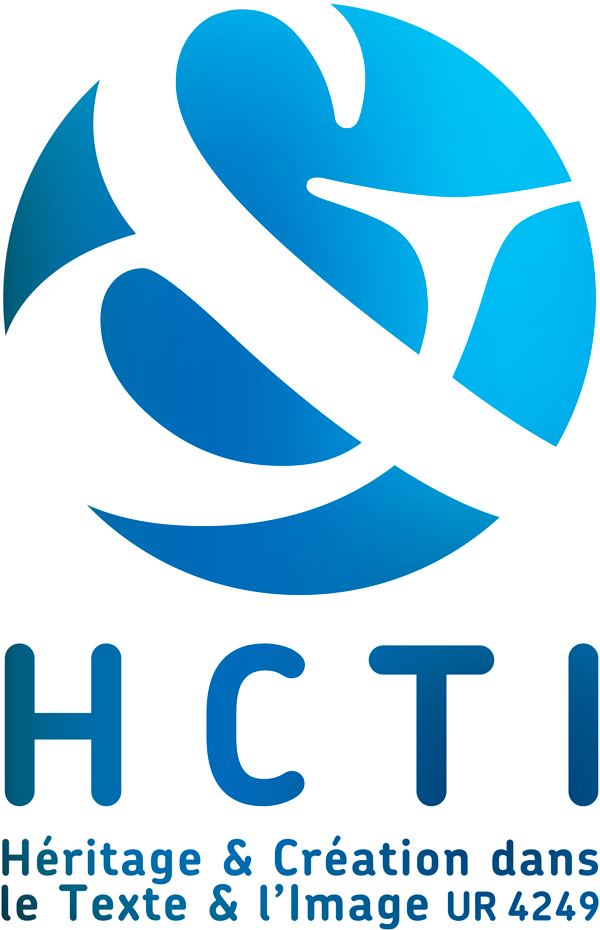Colloque international
organisé par les centres de recherche
Centre d’étude des correspondances et journaux intimes, CECJI-7289
et Héritages et Constructions dans le texte et l’image, HCTI-EA4249
à la Faculté des Lettres et Sciences Humaines Victor-Segalen
à Brest, les jeudi 24 et vendredi 25 mai 2018
Bien qu’abondantes, les études sur l’épistolaire ne semblent jamais s’être focalisées sur le concept de premières lettres, que ce colloque se propose d’interroger.
L’idée même de premières lettres peut s’entendre de différentes manières : il peut s’agir des premières lettres rédigées par un individu, et se pose alors la question formelle du rapport au genre épistolaire, de l’apprentissage d’une écriture codifiée : nous pouvons penser aux lettres d’enfants, aux brouillons de lettres conservés, retouchés et recopiés. Mais la première lettre peut également s’écrire après des années de correspondance : il n’est pas impossible qu’on se soit essayé préalablement à la forme épistolaire quand on écrit ses premières lettres d’amour, sa première lettre à une personne de rang supérieur, sa première lettre de condoléance... Au sein d’une correspondance particulière, les premières lettres adressées à un nouveau correspondant, après des années d’échange avec d’autres destinataires, suggèrent encore qu’un épistolier puisse avoir plusieurs premières lettres. L’idée de premières lettres impose également une mise en perspective au regard de la correspondance qui suit : quel rapport existe-t-il entre la première lettre et les suivantes si l’on envisage la correspondance dans la perspective de la série ?
Au cours de ces deux journées de colloque, on pourra s’interroger notamment sur les points suivants :
- Particularités rhétoriques et génériques des premières lettres : y a-t-il des constantes stylistiques, thématiques, des codes sociaux ou littéraires respectés dans les premières lettres qui permettent d’établir, sans même en connaître la date, qu’elles figurent parmi les premières dans une correspondance ? Quelle place occupent les manuels épistolaires dans l’élaboration de ces écrits ? Comment a évolué au fil de deux siècles la pratique de l’entrée en « épistolature » ?
- Les premières lettres au regard de l’ensemble d’une correspondance : s’interroger sur ce qui caractérise les premières lettres, c’est poser la question de la genèse d’une écriture, tenter de mieux comprendre la manière dont une correspondance évolue, dont elle se fait le reflet des changements vécus par l’épistolier, par son destinataire, ou dont elle traduit les aléas de leur relation.
Les premières lettres sont-elles des ébauches, des esquisses, ou bien des matrices, le paradigme de la correspondance future ? En quoi portent-elles déjà les traces de l’échange à venir ? Déterminent-elles, par leur ton, les thèmes abordés ou le rôle qu’elles assignent d’emblée à chacun des épistoliers, l’ensemble de la correspondance entre deux écrivains ?
- Les fluctuations de la notion d’intimité au sein d’une correspondance : comment la notion d’intimité, inhérente à celle de correspondance, prend-elle progressivement place dans un échange épistolaire ? Les premières lettres peuvent-elles déjà être intimes ou sont-elles plus impersonnelles et formelles ?
- Les rapports entre les premières lettres et l’œuvre d’un écrivain : que disent ces lettres sur l’écrivain, sur la représentation qu’il se fait de lui-même ou de ceux à qui il s’adresse, sur le contexte d’écriture, ou sur son œuvre à venir ? Ecrire pour la première fois à un écrivain reconnu, n’est-ce pas déjà revendiquer sa place sur la scène littéraire de son temps ? La première lettre connue d’un écrivain est-elle sa première lettre ? La première lettre d’une correspondance littéraire ou celle d’un roman épistolaire portent encore souvent en elles un contenu diégétique et informatif essentiel à la compréhension de l’œuvre, qu’il s’agira d’interroger.
L’approche pourra être pluridisciplinaire (relation entre l’écrivain, le philosophe, l’artiste…) mais elle privilégiera les correspondances françaises et britanniques.
Les communications (20 minutes) se feront exclusivement en français ou en anglais.
Les propositions (300 mots) ainsi qu’un titre et une brève note bio-bibliographique sont à envoyer à Catherine Thomas-Ripault (catherine.thomas@univ-brest.fr) et à Alain Kerhervé (alain.kerherve@univ-brest.fr) avant le 1er septembre 2017.
Après consultation d’un comité de lecture, les communications pourront faire l’objet d’une publication.
International Conference
Hosted by the Centre d’étude des correspondances et journaux intimes,
CECJI-7289 and Héritages et constructions dans le texte et l’image,
HCTI-EA4249at the Faculté des Lettres et Sciences Humaines Victor-Segalen, Brest,
on Thursday 24 and Friday 25 May 2018.
Although there is a vast body of critical literature on epistolary writing, the concept of “first letters” which the conference intends to tackle seems to have been neglected.
The idea of first letters can be understood in various ways: it can be about the first letters written by a person, which raises the question of the formal relationship to the epistolary genre, the question of the learning of a codified way of writing. One may think of the letters of children, of the drafts which were preserved, amended and copied. The first letter can also be written after years of correspondence: for instance, many letter writers have had a long experience of the genre when they write their first love-letter or when they write to a person of superior rank for the first time... Within a private correspondence, the fact that a first letter can be sent to a new correspondent, after years of exchange with other partners, clearly suggests that the same letter writer can write several first letters. The idea of a first letter also suggests a link with the following letters: what connection between the first letter and the following ones if the correspondence is regarded as a series of letters?
Over the two days conference, the following points might be examined, amongst others:
- Rhetorical and generic specificities of first letters: are some stylistic or thematic invariants, some social or literary codes present in first letters, which establish that they are part of the first letters of a correspondence, without even knowing their date? What is the impact of letter-writing manuals in the production of those letters? Has the practice of the first letter evolved over centuries?
- First letters and correspondence: trying to define the characteristics of first letters involves the questioning of the genesis of writing, the way a correspondence evolves, how it reflects the changes in the writer’s and/or recipient's lives, how it expresses the evolution of an epistolary relationship. Are the first letters attempts, drafts or matrixes, paradigms of the future correspondence? How much do they bear the traces of the future exchanges? Do they pre-determine the nature of the following exchanges in their tone, themes or roles ascribed to the correspondents?
- The fluctuations of the notion of intimacy in a correspondence: how is the notion of intimacy, inherent in correspondences, gradually introduced in exchanges? Can first letters be intimate or are they bound to be more formal and impersonal?
- The links between the first letters and an author’s literary work: what do the first letters say about an author, about his representation of his own self or of the persons whom he is writing to, about the circumstances of writing, or about his future production? Can writing to an author for the first time be totally separated from the idea of claiming a place in the literary world? Is the first known letter of an author his first letter? The first letter of a literary correspondence or of an epistolary novel often contain essential diegetic or informative elements to the understanding of the whole work.
The approach will be pluridisciplinary (including the letters of authors, philosophers, artists...) but will mainly concern correspondences in the French and English languages.
Please, send 300-word proposals with a title, and short bio-bibliographic note to: Catherine Thomas-Ripault (catherine.thomas@univ-brest.fr) and to Alain Kerhervé (alain.kerherve@univ-brest.fr)
Papers not exceeding 20 minutes will be delivered in English or in French.
A selection of papers will be published, on advice of a reading comittee.
The deadline for sending proposals is 1 September 2017.
- Lorna Clark (Carleton University, Ottawa, Canada)
- Annick Cossic (HCTI - UBO)
- Pierre-Jean Dufief (CRP19 - Nanterre)
- Eric Francalanza (CECJI - UBO)
- Masha Hansen (Greifswald Universität, Allemagne)
- Jean-Marc Hovasse (ITEM - CNRS ENS)
- Emrys Jones (King’s College, Londres)
- Alain Kerhervé (HCTI - UBO)
- Clotilde Prunier (Paris Ouest Nanterre La Défense)
- Catherine Thomas-Ripault (CECJI-UBO)
- Altman, Janet G. Epistolarity: Approaches to a Form. Columbus: Ohio State UP, 1982. 235 pp.
- Ambrière, Madeleine et Loïc Chotard, Nouvelles Approches de l'épistolaire. Lettres d'artistes. Archives et Correspondances, Paris, Champion, 1996. 204 pp.
- Anderson, Howard, Philip B. Daghlian and Irvin Ehrenpreis, ed. The Familiar Letter in the Eighteenth Century. Lawrence: U of Kansas P, 1966. 306 pp.
- Bannet, Eve Tavor. Empire of Letters: Letter Manuals and Transatlantic Correspondence, 1680-1820. Cambridge: Cambridge UP, 2006. 348 pp.
- Bérubé, Georges et Marie-France Silver, La Lettre au XVIIIe siècle et ses avatars, Toronto, éditions du GREF, 1996. 420 pp.
- Bossis, Mireille, L'Épistolarité à travers les siècles. Geste de communication et/ou d'écriture, Stuttgar,: Franz Steiner Verlag, 1990. 188 pp.
- Brant, Clare. Eighteenth-Century Letters and British Culture. Basingstoke: Palgrave Macmillan, 2006. 432 pp.
- Chartier, Roger, Alain Boureau, and Cécile Dauphin, ed. Correspondence. Models of Letter-Writing from the Middle Ages to the Nineteenth Century. Princeton: Princeton UP, 1997. 162 pp.
- Chartier, Roger, La Correspondance: Les Usages de la lettre au XIXe siècle, Lille, Fayard, 1991. 462 pp.
- Cook, Elizabeth Heckendorn. Epistolary Bodies: Gender and Genre in the 18th Century Republic of Letters. Stanford: Stanford UP, 1996. 237 pp.
- Costantini, Mariaconcetta, Francesco Marroni, and Anna Enrichetta Soccio. Letter(s); Functions and Forms of Letter-Writing in Victorian Art and Literature. Rome: Aracne, 2009. 238 pp.
- Decker, William Merrill. Epistolary Practices. Letter Writing in America before Telecommunications. Chapel Hill: U of North Carolina P, 1998. 286 pp.
- Diaz, Brigitte, L'Épistolaire ou La Pensée nomade, Paris: PUF, 2002. 271 pp.
- Grassi, Marie-Claire, Lire l'épistolaire, Paris, Dunod, 1998. xi + 194 pp.
- Haroche-Bouzinac. Geneviève, L'Épistolaire, Paris, Hachette, 1995. 159 pp.
- Hoock-Demarle, Marie-Claire, L'Europe des lettres. Réseaux épistolaires et construction de l'espace européen, Paris, Albin Michel, 2008. 493 pp.
- Howland, John W. The Letter Form and the French Enlightenment: The Epistolary Paradox. New York: Peter Lang, 1991. 191 pp.
- Hurel, Daniel-Odon, Correspondance et sociabilité, Rouen, PUR, 1994. 126 pp.
- Kaufman, Vincent, L'équivoque épistolaire, Paris, Éditions de Minuit, 1990. 202 pp.
- Redford, Bruce. The Converse of the Pen: Acts of Intimacy in the Eighteenth-Century Familiar Letter. Chicago: U of Chicago P, 1986. ix + 252 pp.
- Siess, Jürgen, et Diaz, Brigitte, L'épistolaire au féminin : Correspondances de femmes XVIIIe-XXe siècle, Caen, PUC, 2006. 260 pp.
- Whyman, Susan. The Pen and the People: English Letter Writers 1660-1800. Oxford: Oxford UP, 2009. 348 pp.



